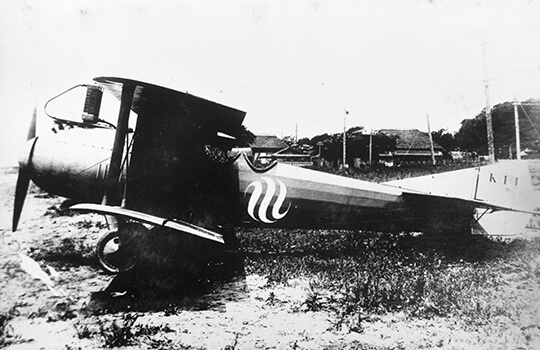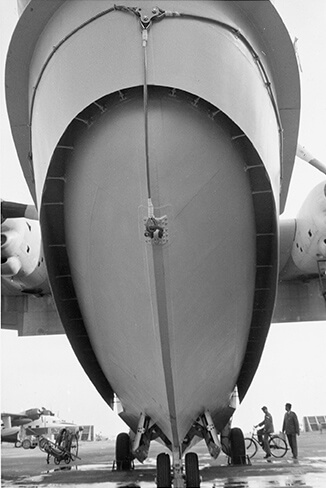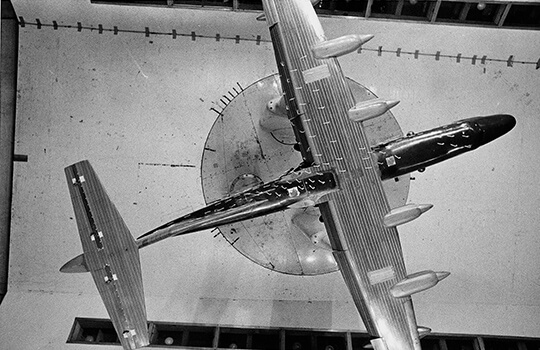Development Story 1
Developmentof a New Amphibian
The US-2 STOL Search and Rescue Amphibian - The best amphibian aircraft in the world, proudly “made in Japan”
The history of ShinMaywa's amphibian aircraft dates back to 1957, when the “spray suppressor” was invented by a group of engineers who were overcome with a burning desire to “once again manufacture aircraft with our own hands.”
ShinMaywa's direct ancestor is Kawanishi Aircraft Company, which produced over 2,800 aircraft between 1928 and 1945.
After the company made a fresh start in November 1949 as Shin Meiwa Industry Company Limited (later renamed as ShinMaywa Industries, Ltd.), following the lifting of the ban on aircraft development / manufacturing in Japan in 1952, we once more set for ourselves the goal of developing new aircraft.
Yearning to resume the aircraft business, then President Ryozo Kawanishi set up an aviation committee within the company in 1953 with a view toward developing a new amphibian. Our amphibians from the Kawanishi Aircraft Company era and ones manufactured by overseas companies at the time shared a common weakness in poor seaworthiness. It was said that new applications of amphibians could be opened up if a craft could be developed that had good seaworthiness and thus could take off and land on rough seas. After analyzing marine survey reports from the Pacific and Atlantic, our development team decided on the goal of developing an amphibian that could take off and land on rough seas with wave height of 3 m, thus kicking off the project to develop “made-in-Japan” amphibians.
The biggest challenge for the task of landing on rough seas with wave height of 3 m was how to go about “eliminating splashes while taxiing on the water.” An idea originating with designer Shizuo Kikuhara led to the commencement of a research project in 1953, which culminated in the invention of a “spray suppressor” some four years later. It was this invention that would go on to solidify our position as a leading manufacturer of amphibian aircraft.
The second challenge we were faced with was the development of a high-lift device. For safe takeoff and landing at sea, it was necessary to substantially lower the cruising speed during takeoff and landing. After research efforts began in 1955, a series of wind tunnel tests were performed until the cruising speed during takeoff and landing was able to be reduced to 45 knots (83 km/h), thereby enabling STOL (short takeoff and landing). These two new technologies resulted in the completion of a foundational design for a new amphibian in 1959.
In 1961, an Amphibian Development Division was established with Kikuhara appointed as chief designer, thereby gradually giving concrete shape to the development and manufacture of new amphibians with cooperation from Fuji Heavy Industries Ltd. and NIPPI Corporation.



